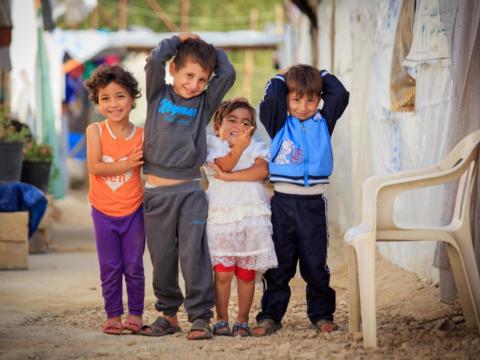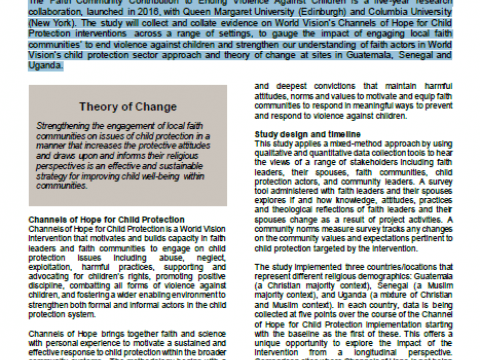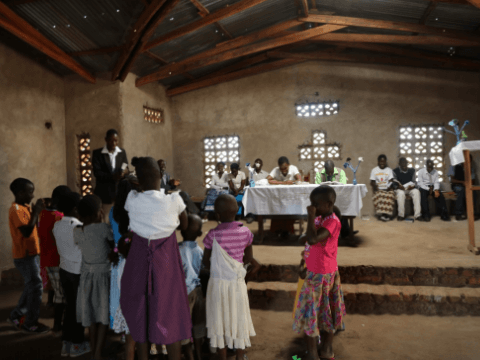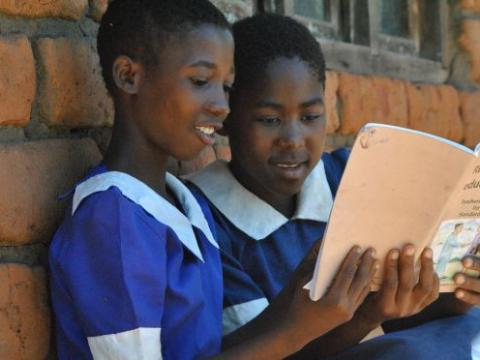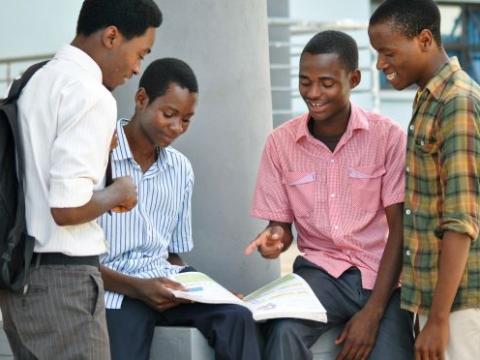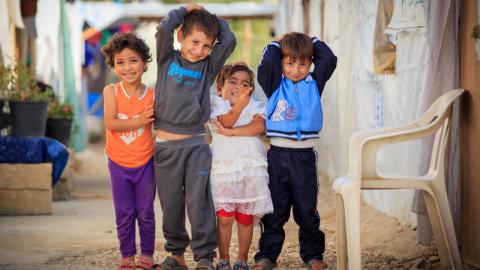
Channels of Hope for Child Protection
Channels of Hope is a World Vision methodology that motivates and builds capacity in faith leaders and faith communities to engage with key child well-being issues. Channels of Hope for Child Protection is an adaptation of Channels of Hope that specifically addresses child protection issues including abuse, neglect, exploitation, and harmful practices. It supports and advocates for children’s rights, promotes positive discipline, strives to prevent other forms of violence against children, and fosters a wider enabling environment to strengthen both formal and non-formal elements of the child protection system.
The Channels of Hope for Child Protection methodology is packaged into a facilitative and interactive workshop, grounded in guiding principles from the participants’ faith tradition(s) and religious texts. The methodology aims to create a safe space for faith leaders and faith communities from various denominations and/or religions to learn, share and debate challenging issues related to violence against children. It seeks to address the root causes and deepest convictions that maintain harmful attitudes, norms and values. The goal of Channels of Hope for Child Protection is to motivate and equip faith communities to respond in meaningful ways to prevent and respond to violence against children, including restoring child survivors; to address sociocultural norms and attitudes that drive violence; to promote peace and overcome violence; and to strive for authentic justice that brings healing and reconciliation.
Learn more about the Channels of Hope process
Key Outcomes
- Increased meaningful engagement and competence of the faith community to address various forms of violence against children
- Faith community addresses sociocultural norms that make children vulnerable
- Increased policy advocacy to support justice for children
- Religious institutions become safer for children
- Improved social cohesion in communities
The Faith Community Contribution to Ending Violence Against Children is a five-year research collaboration, launched in 2016, with Queen Margaret University (Edinburgh) and Columbia University (New York). The study will collect and collate evidence on World Vision’s Channels of Hope for Child Protection interventions across a range of settings. This will allow World Vision to gauge the impact of engaging local faith communities to end violence against children and will strengthen our understanding of faith actors in World Vision’s child protection sector approach and theory of change at sites in Guatemala, Senegal and Uganda.
The study will help identify challenges and barriers that faith communities experience in affecting positive child protection change in a sustainable way. This will help us understand how local context and sociocultural issues influence faith communities' abilities to address violence against children. In addition, the study will gauge the impact of engaging local faith communities to end violence against children, strengthen our understanding of faith actors in World Vision’s child protection sector approach and theory of change, and build evidence on the effectiveness of the Channels of Hope intervention.
It takes a world to end violence against children campaign
World Vision’s campaign, It takes a world to end violence against children, is igniting movements of people committed to keeping children safe from harm. Its name reflects the fact no one person, group or organisation can solve this problem alone and emphasises that faith actors are essential in this movement. Check out faith-inspired organisations who are a part of a growing movement of people speaking out to end violence against children. As apart of this campaign, a theological framework on the Biblical and theological basis for ending violence against children was developed with key church partners.
